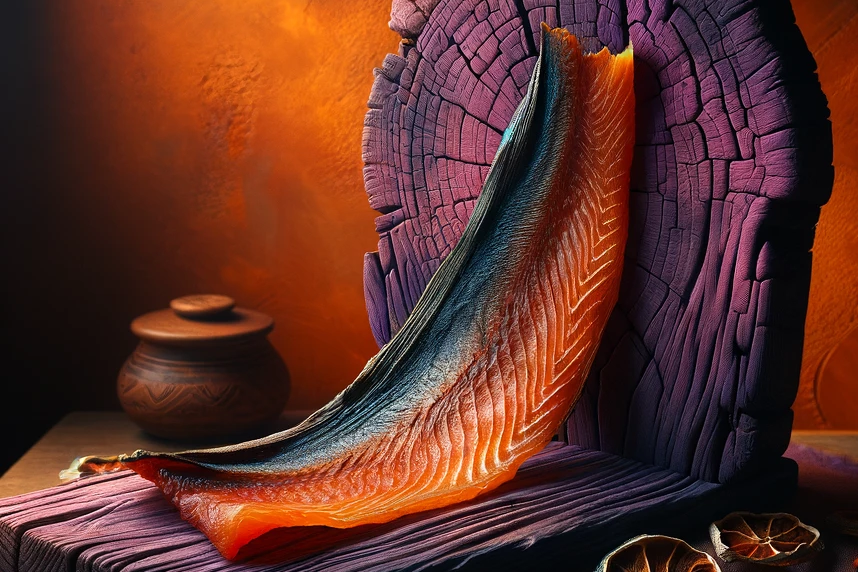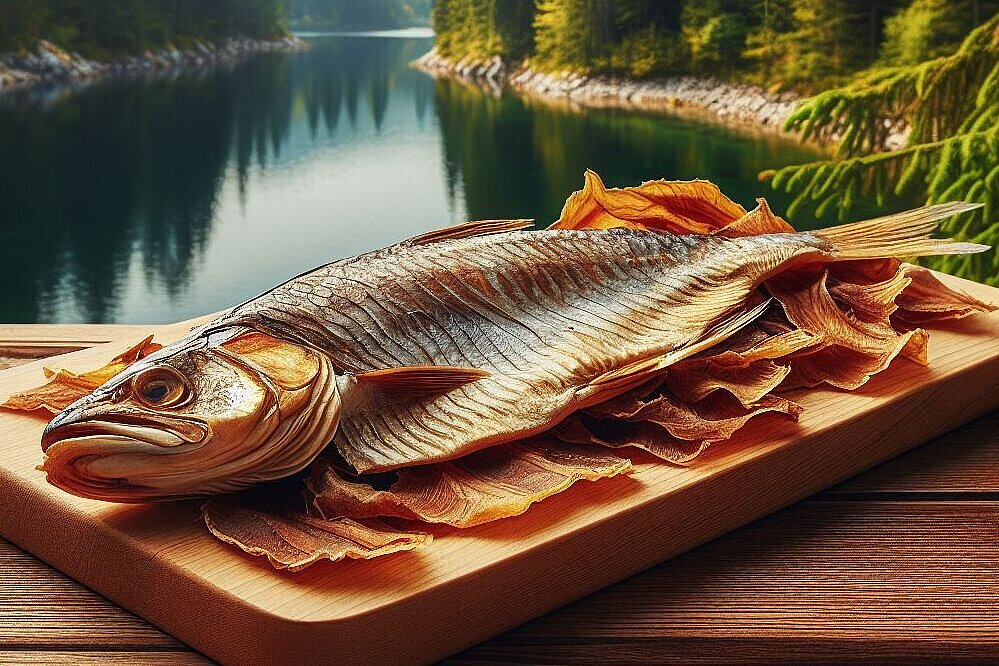Cod skin

What are the benefits of cod skin for dogs?
Cod skin has several benefits for dogs that you should know about:
- Cod skin is rich in protein, which is important for muscle building, wound healing and the immune system. Protein is also a fattening food that helps your dog maintain his ideal weight.
- Cod skin contains omega-3 and omega-6 fatty acids, which are anti-inflammatory and promote skin and coat health. They can also support the cardiovascular system and brain function.
- Cod skin provides vitamins A, D, E and B12, which are important for vision, bone strength, cell regeneration and blood formation.
- Cod skin contains trace elements such as iodine, selenium, zinc and iron, which are important for thyroid function, antioxidant defense, wound healing and oxygen transport.
- Cod skin is a natural chew that is fun for your dog and cleans his teeth. Chewing reduces plaque and tartar and massages the gums.
What are the disadvantages of cod skin for dogs?
Cod skin also has some disadvantages for dogs that you should be aware of:
- Cod skin can cause allergies or intolerances if your dog is sensitive to fish. Watch out for symptoms such as itching, rash, diarrhea or vomiting and consult a vet if you are unsure.
- Cod skin can contain harmful substances such as heavy metals or dioxins, which can accumulate in fish tissue. These can be harmful to your health in the long term. Therefore, make sure that the product is of high quality and that the fish comes from a trustworthy source.
- Cod skin can contain too much fat, which can lead to obesity or digestive problems. While fat is important for dogs, it should be fed in moderation. Do not give your dog more than 10% of its daily energy requirement in fat.
- Cod skin can contain too much iodine, which can lead to hyperthyroidism or hypothyroidism. While iodine is important for dogs, it should be in balance with other trace elements. Do not give your dog more than 0.5 mg of iodine per kilogram of body weight per day.
How do you feed cod skin to dogs?
Cod skin is a treat for dogs and should not be fed as a complete food. You can give your dog a piece of cod skin from time to time as a reward or snack. Make sure that you adjust the amount to his age, size and weight.
Cod skin has several benefits for dogs, including protein, omega-3 and omega-6 fatty acids, vitamins and trace elements. It promotes muscle, skin and coat health, the immune system and teeth cleaning. However, it can cause allergies, contain harmful substances, have too much fat and iodine. It should be given as an occasional treat in reasonable amounts.
Properties 5
Are you looking for other ingredients with a specific property?
Just click on them to find more.
If you notice any signs of hypersensitivity or poisoning in your dog, you should see your vet immediately. We are not a substitute for a vet, but we try to be as accurate as possible. Every dog reacts differently and we recommend you get a second opinion or consult your vet if in doubt.
Stay healthy and take good care of your four-legged friend!😊
Similar to Cod skin
Salmon skin is exactly what it sounds like - the skin of the salmon. After the salmon has been processed for human consumption, the skin is often removed and can then be further processed to serve...
Fish skin is the outer layer of fish that protects them from injuries and pathogens. It consists of scales that vary in size and shape depending on the fish species. Fish skin contains many valuable...
Halibut skin is the outer layer that covers halibut, a large flatfish known for its white, firm flesh. The skin of this fish is thick and, similar to other fish species, can be eaten both raw and...
Haddock skin is, simply put, the outer layer that covers the haddock. While haddock itself is known for its tasty flesh, its skin is often overlooked, even though it offers a number of nutritional...



